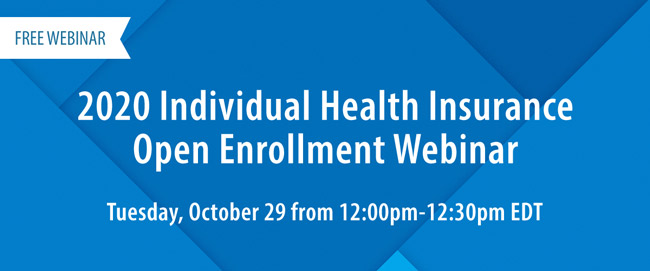4 Myths About the Individual Health Insurance Open Enrollment Period
We’ve heard a lot of Open Enrollment myths over the years and want to set the record straight.
Myth #1 “There are fewer insurers to choose from.”
Many carriers who initially fled the federal exchange have returned and now offer plans alongside others who have entered the marketplace. This increase in the number of plans being offered has allowed many individuals and families to re-examine their needs and adjust their coverage amounts accordingly.
In addition to having access to the same carriers and plans listed on the federal exchange, the AOA Insurance Marketplace can offer members even more options. To view the full range of available ACA-compliant health plans, please visit https://osteopathic.memberbenefits.com/.
Myth #2 “The premiums are too expensive.”
Now that the federal exchange marketplace has stabilized, there may be lower-cost options for ACA-compliant health plans than past Open Enrollment periods. For example, Blue Cross Blue Shield has filed for a 2.03% decrease in premiums in Texas.
Even if your coverage needs remain the same, you may be able to find a lower premium being offered by a different insurer. We recommend always reviewing the health insurance options available to you during the annual Open Enrollment period.
Myth #3 “You’ll be penalized at tax time for not having insurance.”
In previous years, if an individual did not have health insurance for more than 2 months of the year and did not qualify for an exemption they would face a tax penalty of $695 or 2.5% of their taxable income (whichever amount was greater). As of January 1, 2019, the tax penalty known as the individual mandate has been repealed, though some states may still enforce penalties on individuals who don’t have health insurance.
Myth #4 “Applications are processed instantly.”
On average, our team will process an enrollment application within 24 business hours and submit it to the carrier. Once the application is with the carrier, their team will take over and require an additional 10-15 business days to process the application.
The carriers often get overwhelmed with applications during the Open Enrollment period, so we recommend enrollees submit their health insurance applications as early as possible.
Securing ACA-Complaint Coverage for 2020
This year, Open Enrollment runs from November 1 through December 15 with a coverage effective date of January 1, 2020. This is the one time of year where individuals and families can enroll in ACA-compliant health insurance plans.
Ready to start shopping? Visit https://osteopathic.memberbenefits.com/ to shop ACA-compliant health plans today.
Not sure where to start? Schedule an appointment with one of our licensed benefits counselors and let us walk you through finding the best health insurance fit for your needs.










